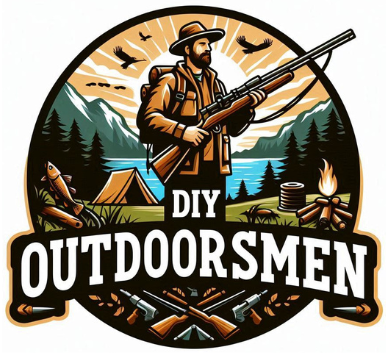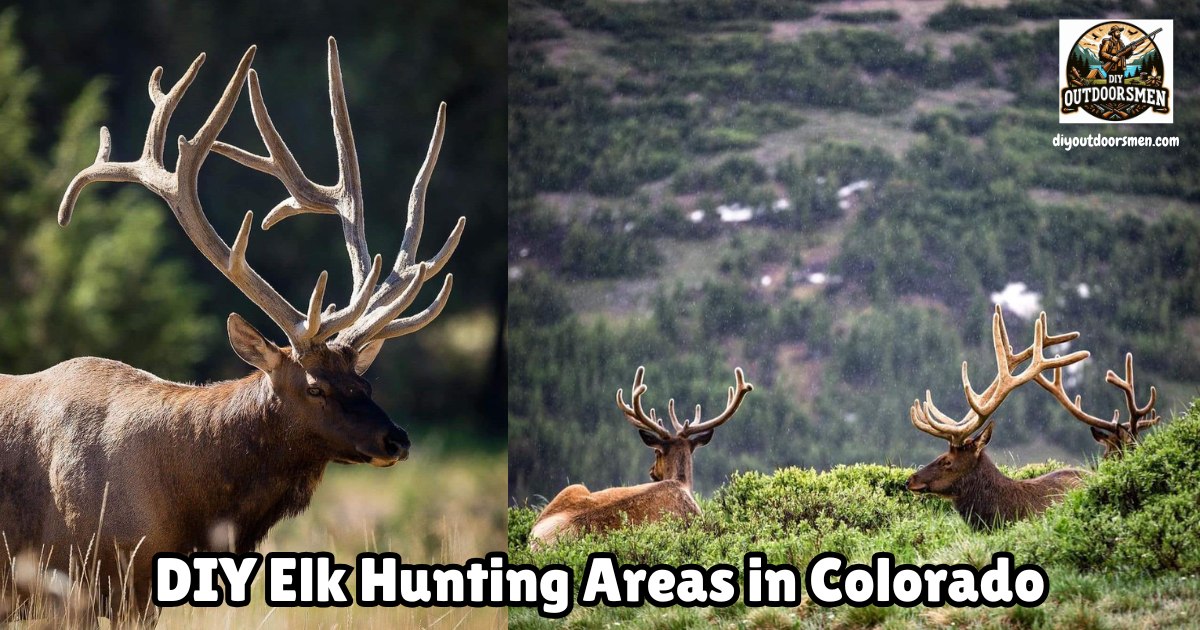Contents
- 1 Understanding DIY Elk Hunting in Colorado
- 2 Top Public Elk Hunting Areas in Colorado
- 3 Mapping Out Your Hunt: Research and Regulations
- 4 Essential Gear and Preparation for DIY Elk Hunts
- 5 Planning Your Route in Specific Regions
- 6 Local Resources and Guide Tips for Self-Guided Hunts
- 7 Respecting the Land and Ethical Hunting Practices
- 8 Adapting to Weather and Terrain Challenges
- 9 Navigating Licensing, Permits, and Legal Requirements
- 10 Reflecting on Personal Experiences and Future Trips
- 11 Final Thoughts on Planning Successful DIY Elk Hunts
- 12 Looking Forward to More Adventures
- 13 Additional Insights for the Avid Hunter
Elk hunting in Colorado can be an exciting challenge for the do-it-yourself adventurer. I have found that planning a personal hunting trip not only helps save on guide fees but also builds self-reliance. There is a wide selection of public lands in Colorado that support elk populations and offer plenty of opportunities.
QUICK LOOK: Some of the Best Areas for DIY Elk Hunting in Colorado
- San Juan National Forest. Spanning southwestern Colorado, this forest covers counties such as Archuleta and La Plata. Its rugged terrain and remote valleys provide a natural habitat for elk.
- Rio Grande National Forest. Located in southern Colorado, the forest offers a mix of open meadows and thick woodlands that attract elk, especially during rutting season.
- White River National Forest. Found in northwestern Colorado, this extensive forest covers parts of Eagle, Pitkin, and Garfield counties. I have noticed that the high-altitude pastures and valley regions are frequented by elk during certain seasons.
- Gunnison National Forest. East of the Rockies, the diverse landscape in Gunnison supports healthy elk populations, particularly in its more remote hunting units.
This article presents a detailed guide to the best DIY elk hunting areas across the state. Here, I cover specific counties and regions where public access is common, along with advice on planning your hunt, knowing local regulations, and preparing your gear.
Understanding DIY Elk Hunting in Colorado
Before you head out into the wilderness, it is important to understand what do-it-yourself elk hunting involves. I have learned that this approach works best for experienced outdoorsmen who are comfortable with independent planning and have spent time studying Colorado’s varied terrain.
DIY elk hunting relies on an in-depth understanding of natural patterns, weather behavior, and terrain conditions. In Colorado, rugged mountain landscapes, dense forests, and open fields create both challenges and opportunities for the eager hunter.
The DIY approach allows you to set your schedule and adapt your plans on the fly. It means jumping into research on seasonal movements, public land boundaries, and local wildlife regulations. I always remind myself that being well-prepared is key to success, as it leads to a rewarding experience free from unexpected pitfalls. In Colorado, where elk roam freely in many public lands, the right preparation can transform the hunt into a memorable adventure.
Top Public Elk Hunting Areas in Colorado
Colorado hosts several public lands that are ideal for elk hunting. I have researched and identified several regions known for generous public access and promising elk populations. These areas include vast National Forests and counties with extensive open spaces that do-it-yourself hunters appreciate.
Some of the popular public hunting areas include:
- San Juan National Forest. Spanning southwestern Colorado, this forest covers counties such as Archuleta and La Plata. Its rugged terrain and remote valleys provide a natural habitat for elk.
- Rio Grande National Forest. Located in southern Colorado, the forest offers a mix of open meadows and thick woodlands that attract elk, especially during rutting season.
- White River National Forest. Found in northwestern Colorado, this extensive forest covers parts of Eagle, Pitkin, and Garfield counties. I have noticed that the high-altitude pastures and valley regions are frequented by elk during certain seasons.
- Gunnison National Forest. East of the Rockies, the diverse landscape in Gunnison supports healthy elk populations, particularly in its more remote hunting units.
Each of these regions provides public access, although local regulations may vary. I recommend reviewing current harvest rules, license requirements, and seasonal restrictions before planning your trip. This ensures that you make informed decisions and enjoy hunting without surprises.
Mapping Out Your Hunt: Research and Regulations
Planning is an essential part of any successful elk hunt. The vastness of Colorado’s public lands means that there is always much to consider. I have found that taking a planned approach to research and mapping can help avoid unwanted encounters with unexpected regulations. Each public hunting area may have different access rules, so detailed research is very important before heading out.
When I plan a DIY elk hunt in Colorado, I always start by reviewing information from the Colorado Parks and Wildlife website. This site lists current regulations, quota areas, and maps of designated hunting zones. Here are some steps that I consider useful:
- Study the terrain and check for safe routes and potential obstacles.
- Review local hunting reports and speak with experienced local hunters when possible.
- Check weather forecasts, as conditions in the mountains can change quickly.
- Ensure that you have all required permits and that you understand the rules surrounding public lands and private property boundaries.
This phase of preparation can make the difference between a well-planned trip and one that leaves you scrambling for information in the field. I have learned that clarity in planning builds confidence and ultimately leads to a more enjoyable hunting experience.
Essential Gear and Preparation for DIY Elk Hunts
Equipping yourself properly is one of the fundamentals of a successful elk hunt in Colorado. I always prepare a list of gear that includes the basics of survival and specialized hunting equipment. A well-packed bag means you are prepared for unexpected challenges that may come your way.
My recommended gear list typically includes:
- A reliable rifle or bow suited to elk hunting regulations.
- Quality optics such as binoculars and scopes for spotting elk at long distances.
- Appropriate clothing and layers to adapt to the mountain weather.
- Navigation tools like maps, GPS, or a compass.
- Emergency and first aid supplies, including a small kit and extra food and water.
I also emphasize the value of extra ammunition, a durable backpack, and quality boots suited for rugged terrain. Preparation is vital, and having the right gear helps ensure your safety and comfort while you are on the hunt. Having everything in order before departure means you can focus on the task ahead without worrying about missing essentials.
Planning Your Route in Specific Regions
Selecting the precise location for your hunt requires a mix of local insight and on-the-ground research. I have focused on several regions that are known for favorable elk habitats. For instance, the San Juan National Forest offers remote canyons and high alpine meadows that serve as typical elk grazing areas.
The public lands here are accessible to those who spend time studying topographical maps and connecting with local resources. Another region that caught my attention is the area covered by the Rio Grande National Forest. Its open meadows and forested slopes experience seasonal migrations, making it an excellent spot for locating elk.
The White River National Forest, with its mix of valleys and rugged highlands, is also a favorite among DIY hunters. These areas allow for a stealth approach and long-range spotting, which are essential for a successful hunt. Mapping your route in each region involves plotting safe trails and identifying potential campsites for overnight stays.
I often use a combination of digital mapping tools and physical maps. Creating a route with backup options ensures that if one part of your adventure becomes inaccessible due to weather or other factors, you have alternatives ready.
Local Resources and Guide Tips for Self-Guided Hunts
While DIY hunting emphasizes independence, I have found that local resources add valuable insights. Local wildlife offices, ranger stations, and even outdoor forums provide up-to-date information on elk movements and any changes in land management policies.
One of the best resources for self-guided hunts is the local branch of Colorado Parks and Wildlife. They provide maps, seasonal hunting alerts, and safety guidelines. I also find that outdoor clubs and community boards offer advice on little-known trails and spots where elk are often found. Some local hunters share their experiences on various outdoor blogs and forums, which helps you learn from someone who has been there.
In addition, some counties offer seasonal workshops that focus on ethical hunting practices and survival skills. I make it a point to attend such events occasionally, as they help me stay current with best practices and any new legal requirements. The combination of official resources and shared local insight can prove invaluable when planning your DIY elk hunt in Colorado.
Respecting the Land and Ethical Hunting Practices
Respect for the land is a core value when planning any hunting trip in Colorado. I have always believed that ethical practices are key to preserving the environment and ensuring future hunts remain accessible. Sustainable hunting practices include minimizing disturbances to habitats and following all guidelines set by wildlife authorities.
Some practices I adhere to are:
- Following all local guidelines on hunting quotas and limits.
- Using non-toxic ammunition where regulations permit, to reduce environmental impact.
- Packing out all waste and ensuring the area is left as you found it.
- Giving back to the local community by supporting conservation projects or participating in cleanup efforts.
Ethical hunting is not just about following the law. It is about taking the responsibility to care for nature and ensuring that the majestic elk and their habitats remain intact for future generations of hunters. Observing these practices fosters a sustainable environment where wildlife and public interest can coexist harmoniously.
Adapting to Weather and Terrain Challenges
Colorado’s weather and terrain can switch up rapidly. I have learned that flexibility and preparedness are key to adapting to these natural changes. The unpredictability of the weather, whether it is sudden snow in the high-altitude areas or unexpected rain, means you must constantly adjust your plans.
Knowing the specifics of the region you choose is very valuable. Before setting out, I always check the latest weather reports. I also plan for contingency scenarios such as delayed hunts or the need for extra shelter. Mountain climates often require extra layers of clothing and waterproof gear.
Adjusting to the terrain means familiarizing yourself with rocky paths, steep declines, and areas where visibility might be low due to fog or heavy tree cover. This kind of adaptability not only prepares one for potential challenges but also gives a boost to the overall experience. Being able to anticipate weather patterns and terrain difficulties leads to a more relaxed and successful hunt, ensuring that you remain safe and effective throughout your adventure.
One of the most important aspects of DIY elk hunting in Colorado is securing the proper license and permits. I have always stressed that knowing and following legal requirements is very important. Colorado has strict rules regarding hunting seasons, quota systems, and reporting procedures after a hunt. Starting your planning process by checking official sources can save time and prevent legal complications later on.
When I plan a DIY elk hunt, I follow these steps:
- Review the Colorado Parks and Wildlife website for current licensing options and application deadlines.
- Apply for the relevant permits early, as many popular areas have limited quotas.
- Familiarize yourself with the designated zones on public lands and any specific restrictions that may apply.
- Keep copies of all licenses and permits with you while in the field.
These measures help in avoiding any issues with authorities during your hunt. Legally compliant hunting not only ensures your safety but also contributes responsibly to the conservation efforts in Colorado. It is a small step that plays a big part in maintaining healthy elk populations and supporting public access to these natural resources.
Reflecting on Personal Experiences and Future Trips
My personal experiences in Colorado have taught me valuable lessons in patience, preparation, and respect for nature. Every trip has its own story, and I have grown to appreciate the nuances of the land through repeated visits to various public hunting areas.
Some hunts have been challenging, while others have offered the thrill of an unexpected encounter with a large bull elk against a backdrop of golden aspens and rugged peaks. I make it a point to keep detailed notes about each trip.
This includes details on the terrain, weather conditions, animal movements, and anything else that might be useful for future hunts. By doing so, I build a personal database of experiences that aids in planning more effective trips later.
It also serves as a reference during the off-season when planning becomes reliant on past successes and careful observation. Sharing these reflections with fellow hunters on outdoor forums and local clubs often opens the door to additional tips and alternative approaches.
I strongly believe that continuous learning is essential. Embracing both successes and setbacks has refined my approach to DIY elk hunting over the years and provided a solid foundation for future adventures in Colorado’s wild areas.
Final Thoughts on Planning Successful DIY Elk Hunts
The adventure of planning and undertaking a DIY elk hunt in Colorado is both challenging and richly rewarding. I have tracked down that success in this endeavor is closely tied to thorough preparation, respect for nature, and an open mind.
Every step of the process, from studying topographical maps to handling legal requirements, plays an important role in shaping the overall experience. By integrating local insights, ethical hunting practices, and flexible planning, you can make the most of what Colorado’s public lands offer.
Colorado is home to some of the finest public lands for elk hunting. Whether you choose to explore the vast expanses of the San Juan or Rio Grande National Forest or venture into the high peaks of the White River, there is something to challenge and inspire every self-reliant hunter.
I trust that this guide provides a useful foundation for your next DIY elk hunting trip in the state. Embrace the adventure, plan carefully, and let the wild landscapes of Colorado become a backdrop for experiences that last a lifetime.
Looking Forward to More Adventures
Every time I return from a field expedition, I am reminded of how much there is to learn and appreciate about Colorado’s diverse natural beauty. Conversations with local experts, continual updates on regulations, and evolving personal strategies only add to the adventure.
I encourage other outdoorsmen and women to get into DIY elk hunting with both caution and enthusiasm, knowing that each trip not only hones your skills but deepens your respect for the land. This guide has touched on several key aspects of planning and executing an independent elk hunt.
I hope the detailed breakdown—from selecting a location to preparing gear and following legal protocols—gives you a strong starting point. Enjoy the challenge, remain adaptable, and let every expedition enrich your understanding of Colorado’s wild spaces. May your next elk hunt be safe, successful, and filled with remarkable stories from the heart of Colorado’s wilderness.
Additional Insights for the Avid Hunter
Over time, I have gathered even more insights that help in fine-tuning any elk hunting expedition. One useful tip is to establish a routine of checking both digital and local weather reports frequently in the days leading up to your trip.
This extra step can save you from unexpected weather changes that might otherwise disrupt your plans. Moreover, connecting with a community of local hunters through forums or club meetings has proven to be invaluable. Often, these interactions lead to new ideas and tips that you would not find in standard guides.
Another piece of advice is to consider the long-term preservation of the hunting grounds. By taking the time to clean up after your expedition and supporting regional conservation projects, you help ensure that these wild spaces remain pristine for future enthusiasts.
Small acts like this add up to a meaningful contribution towards environmental stewardship. I make it a habit to leave behind only footprints and take away only memories. Additionally, honing your tracking and observational skills can greatly improve your overall experience.
Spending time learning how to interpret subtle signs in nature, such as wear on paths or broken twigs, can lead you to areas where elk might be grazing. These skills are developed over time and through practice, so don’t be discouraged if progress seems slow at first.
Every outing offers a learning opportunity, blending practical experience with a deeper understanding of nature. Remember also to plan for unexpected delays or changes in the environment. Having backup plans in place—such as alternative routes or additional gear—can make all the difference in challenging situations.
This proactive approach not only boosts your confidence but also ensures that you remain safe while out in the wild. With thoughtful preparation and a proactive attitude, every hunting trip becomes more than just an expedition; it transforms into a journey of growth and discovery.
Finally, take time after each trip to reflect on what worked and what didn’t. Whether it is adjusting the gear list, rethinking the route, or even reviewing the local regulations again, continuous refinement of your strategy will help you improve with every outing.
This dedicated approach to learning and adapting is what truly sets a skilled DIY hunter apart. With these additional insights, I hope you feel more prepared and excited for all the experiences that lie ahead in Colorado’s vast wilderness.
Check Out Our Latest Articles:
- Complete Guide On Tracking Game Animals
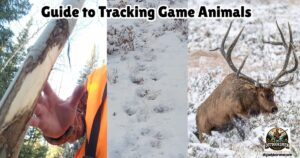
- DIY 4-Step Guide To Field Dressing And Quartering A Deer
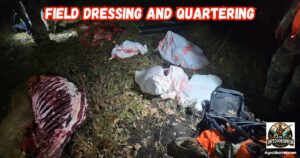
- Night Vision Binoculars For Nocturnal Hunting
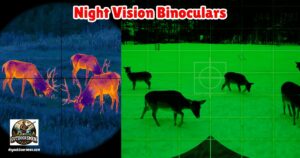
- The Science Behind Camouflage Patterns For Deer Hunting
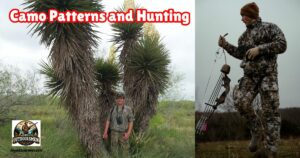
- Binocular Accessories For Hunters

- 9 Tips for Using Trail Cameras To Track Deer Movements

As always, stay safe, enjoy the journey, and please try to leave it cleaner than you found it. If you have any comments, questions, ideas, or suggestions, please leave them in the comment section below, and I’ll get back to you ASAP. You can follow us on YouTube: Man Art Creations for videos of our DIY Adventures.
P.S. – Thanks so much for checking out our blog. We really appreciate it. Just so you know, we may receive a commission if you click on some of the links that appear on our site. This helps us keep our content free and up-to-date for everyone. We appreciate your support!
